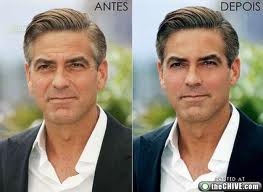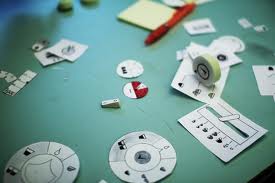howie deee ? how was your day ? or specifically , how was your saturday ? =D
=,=” so many question marks . For this saturday , we going to have workshop . Yessss ! its the day after friday . And yesss , its the day after Putrajaya field trip . Ohhh yesss , we’re bit exhausted . But , fret not , we still can manage to be bushy tailed and bright eyes. =D
I’m sorry i’m late to class , but its unavoidable , there’s NO bus on Saturday and Sunday . Okay , i’m late and everybody was there plus workshop has already started. Being late were never beneficial to anyone . So were me , i’m lost about the first lesson . Worsen the condition , i’m clueless about photoshop and that kind of thingy . Luckily , my friend patiently tell me , instruct me what needed to be done , what to click , where to get , how to do . =) thank you !
Generally , we been taught some skills in using Adobe Photoshop. The first session of the workshop been conducted by Mr. Faisal. He taught us the baby step in editing photo using Adobe Photoshop . I never used Adobe Photoshop before , so i’m a bit sceptical to learn the skill yet nervous too . People been saying that Photoshop was a bit tricky and complicated in using . What can i say about that , you’ll get the skill if you have the willingness to explore it . But i fret ! Ohhh , why we need to use Adobe Photoshop on that day . Help me , help me :’)
First of all , we asked to chose a picture and cut it . Then chose another pic , preferably background picture to layer the first cut out picture .Why preferably background picture ? Because we’re amateur , we don’t have the much needed skill and we need to clearly see the process . For me , i chose cute penguin picture . After cut the penguin and disposed the unwanted parts , i layer it on desert picture . Its contradict the penguin actually . In real life , there’s no penguin lives in desert . In fact , no penguin can lives there . Why i chose that ? Because i want to conveys a message that 1st ) life goes on no matter what happen , 2nd) Be strong and 3rd ) Please cleverly adapt yourself in every situation . But , sadly , ehemmm … I didnt save the picture . So , i don’t have it . Thus , i can’t post in here . T.T
 Impressive right ? thats what we can do using Adobe Photoshop . =) But the two later before-after pictures above need more advanced skill of course .
Impressive right ? thats what we can do using Adobe Photoshop . =) But the two later before-after pictures above need more advanced skill of course .
*Another lesson here girls , don’t trust magazines pictures that show super duper hot beautiful girl , okay ? In real life , they’re just like us .
Practical time ! Dr Rosseni asked us to design our own banners . Howwwww ? tsk tsk T,T .
This time i chose jellyfish pictures . First i chose it because the blue colours contradict my blog theme colour which is black . hewhewhewww ! turns out quite well . But if i got chances , i want to re-design it .
Mr. Helmi’s workshop was Post-production phase so he taught us about skills in video transfer, video editing, audio editing and finalizing our video. As for video transfer, there are three types of video tranfer depending on the type of video camera :
- Hard disc transfer
- Mini disc transfer
- Tape (miniDV) transfer
In video editing, there are three softwares that we can use :
- Windows Movie Maker
- Adobe Premier
- Final Cut Pro
- Arrange, change, add, cut and remove video clips
- Video effects on a video clip
- Video transitions between video clips
- Voice
- Music – to create mood, to control audience emotion
- Sound effects – used for impact (Audio usage)
















